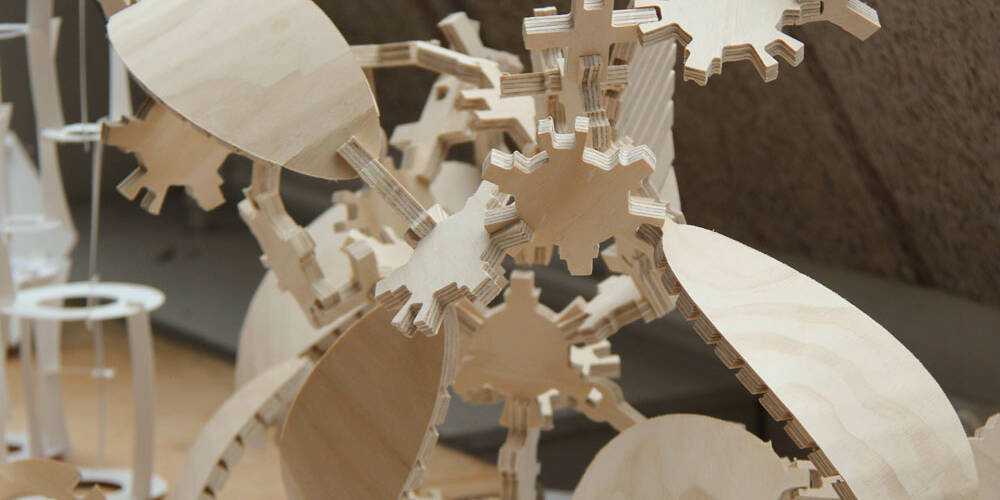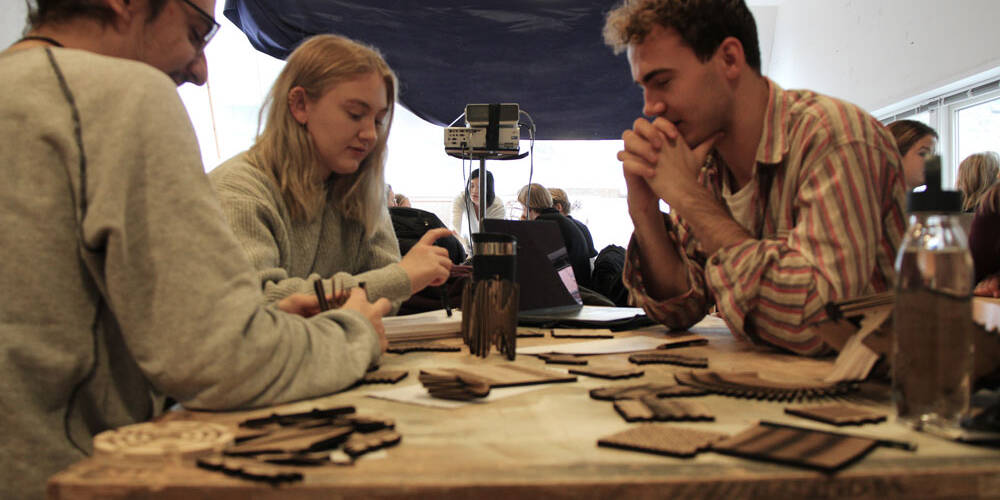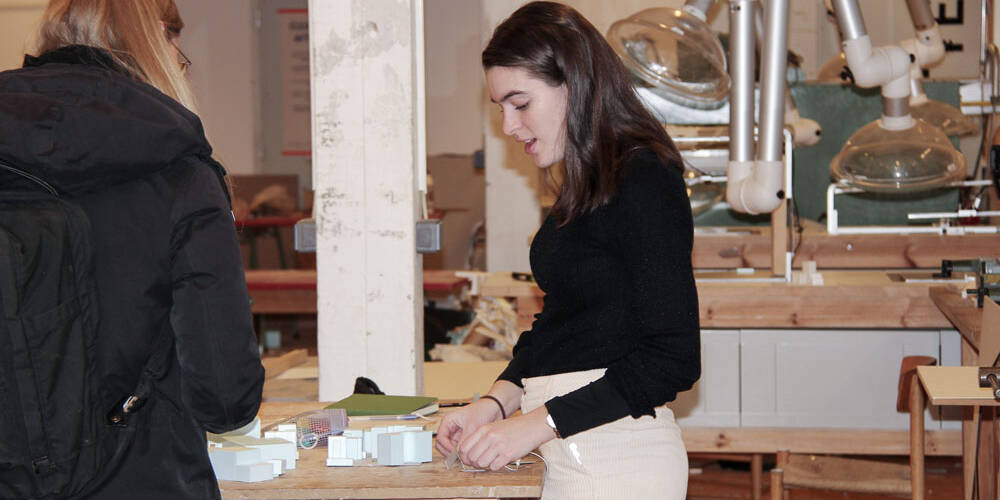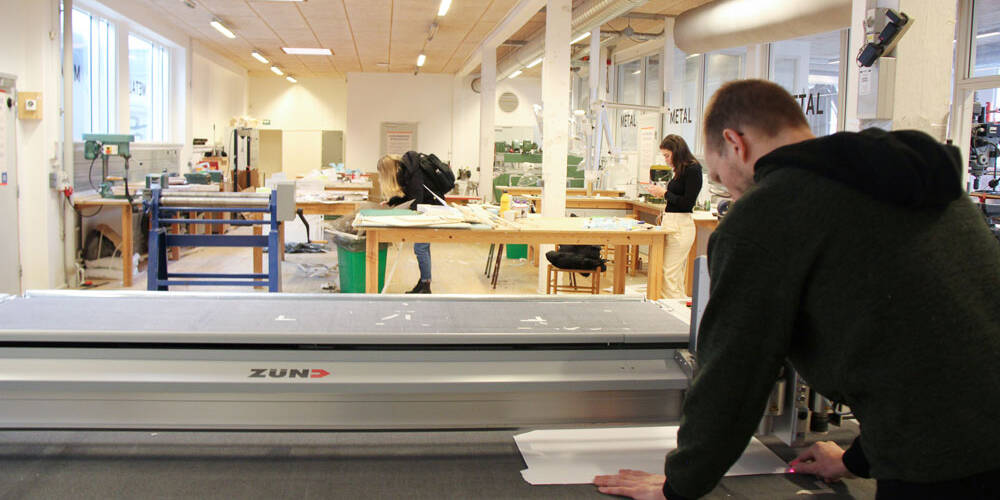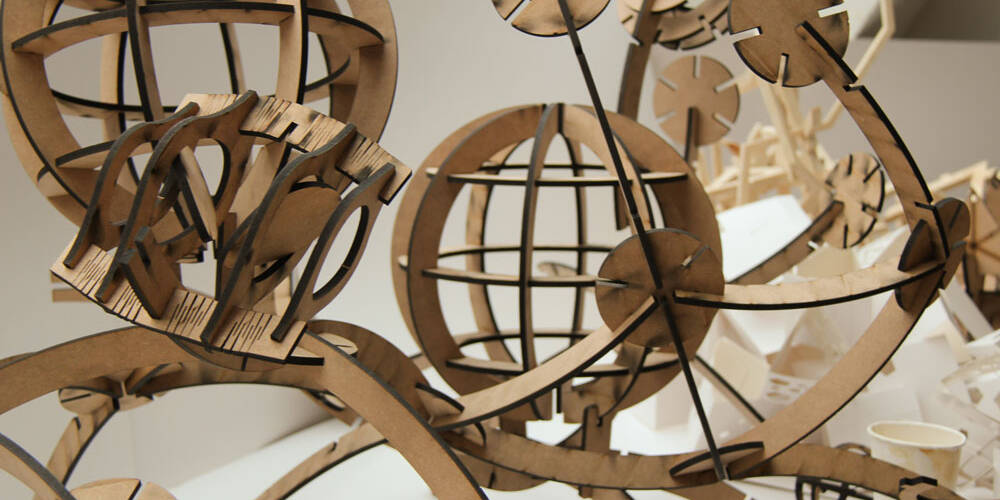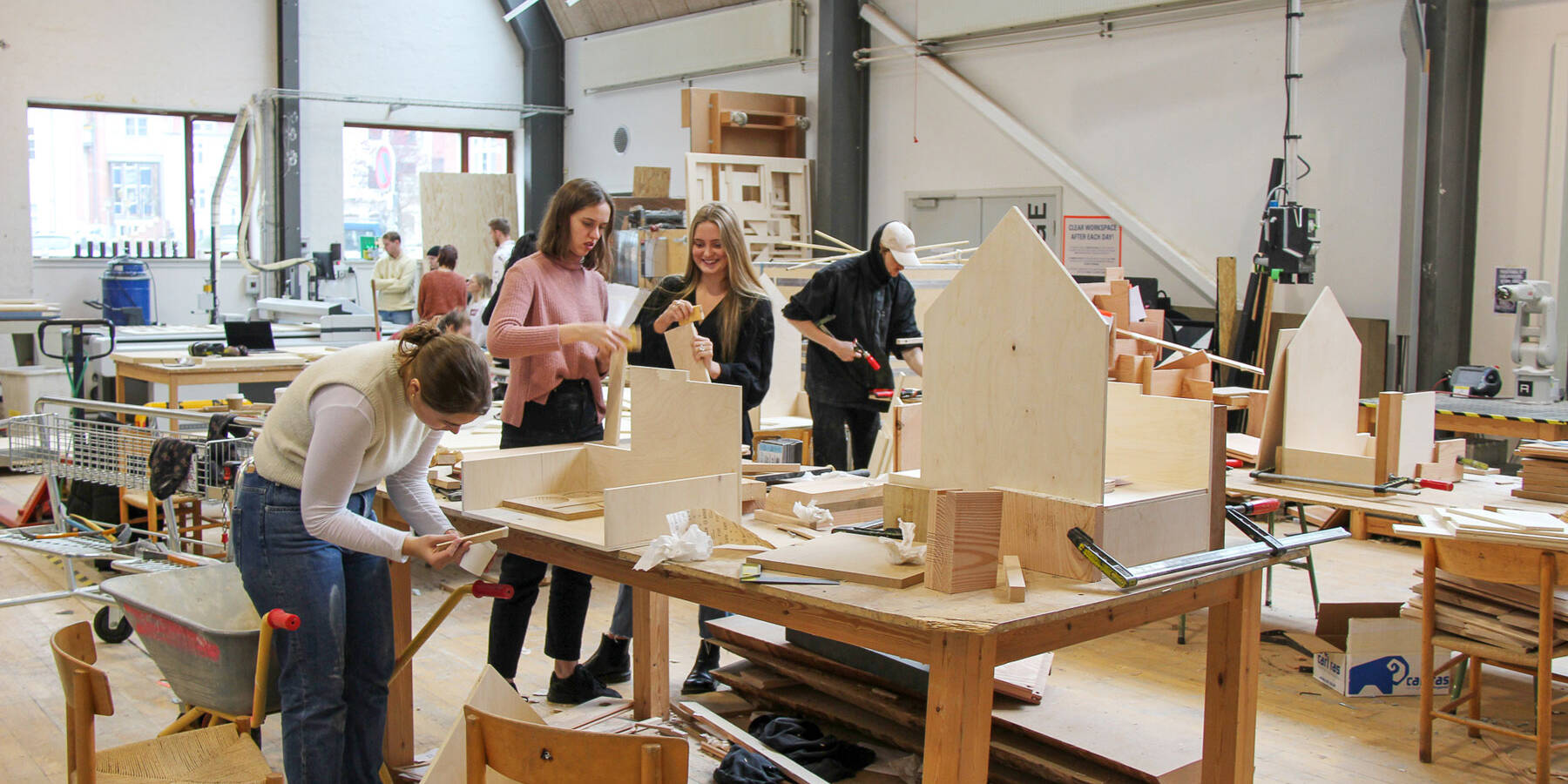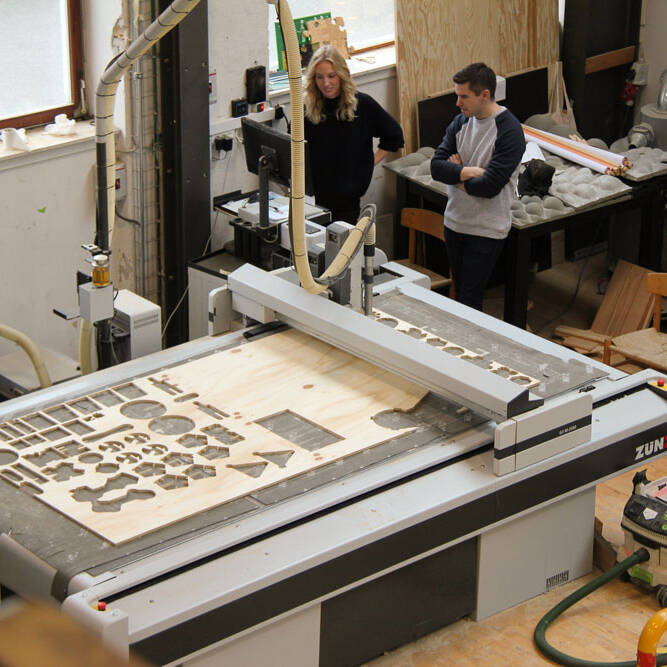
Three Cutters – 650 Operators!
At the School of Architecture in Aarhus (Denmark), there are three cutters at work around the clock. They are operated by 650 students, who use them for assignments, projects, presentations and learning.
The minute you step into the workshop of the college, you are met with a creative bustling of sounds and sights. Groups of students are gathered around their projects, deeply concentrated on creating projects in cardboard, wood, MDF, plastic, ceramics and metal. All types of materials are brought into use, when the next generation of architects visualize their ideas, and create their projects and presentations.
For the students, the cutters from Zünd are indispensable. The college has three cutters, that are in use 24/7. For access to the cutters, the students log into an online booking system and reserve a time slot.
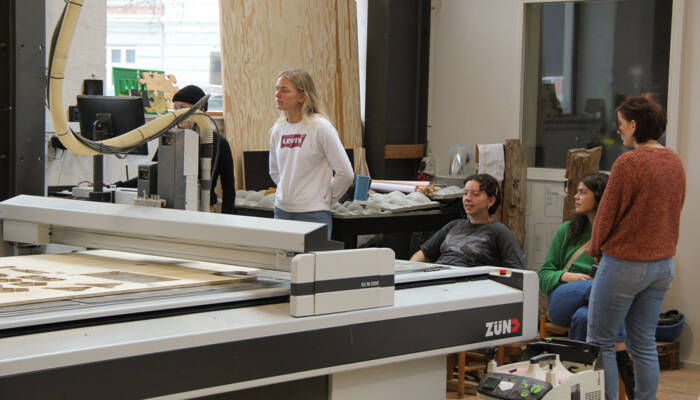
User-friendliness first!
The supervisor of the college’s workshop, Kasper Riis explains: "No other cutter is as user-friendly and easy to operate as the ones from Zünd. It is as good as it gets! We can let our students use the machines around the clock unsupervised, and the machines are in very good shape – in spite of the numbers of operators. The cutters are very popular with the students because of their user-friendliness. The college has other and larger machines and robots, that route in 3D and can process heavier materials. But these require supervision, and are not easy accessible – like the Zünd cutters."
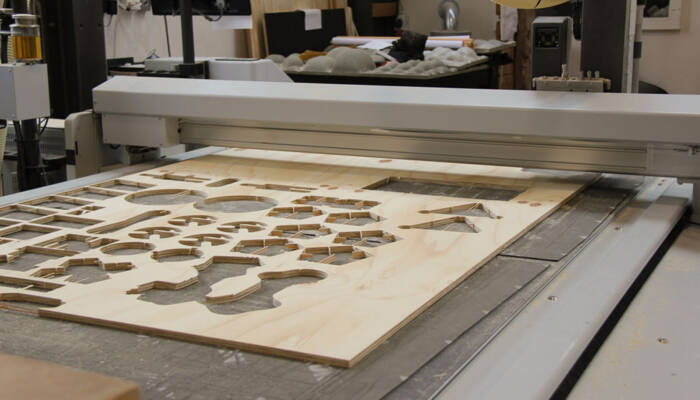
The cutters are used to enhance creativity
During our visit, a group of first-year students were in class learning how to design for a Zünd cutter. Their goal was to explore abstract forms and compositions, which they created digitally – and hereafter sent to a cutter.
No purpose, rules or limitations! It was solely a matter of exploring the extent of the materials and their characteristics. Not only in terms of cutting – but also in folding and creasing. "We use our cutters to help students all the way through the process. Of course the cutters are used for creating models and presentations – but just as important, the machines are used for exploring the limits and extents of materials, and find new and different ways of creating shapes and forms. A material may as a starting point be rigid and hard – but when cut, creased and routed becomes soft and flexible. Vice versa, fragile and soft materials can be reconstructed to be strong and endurable."
The combination of technologies gives the students every possibility to shape and form their ideas. The cutters are an essential part of the workshop – and are highly valued by the students.
